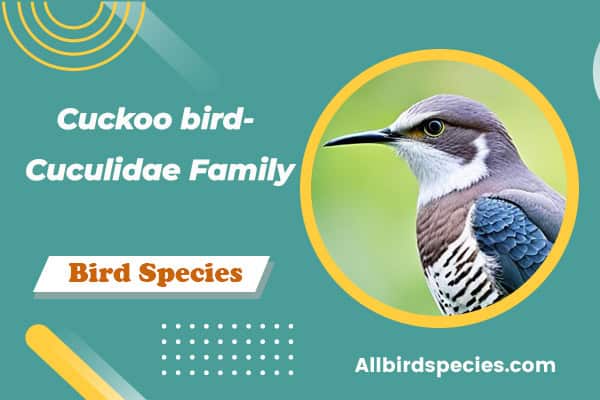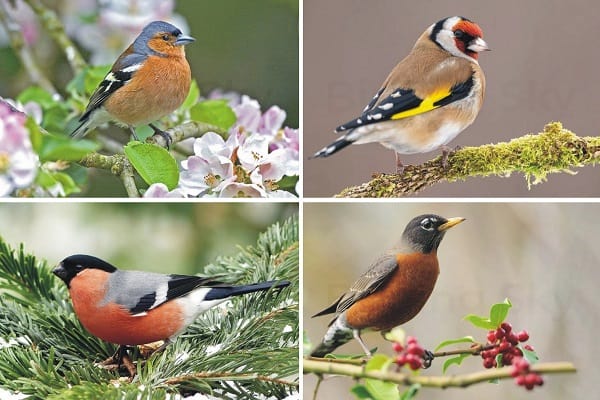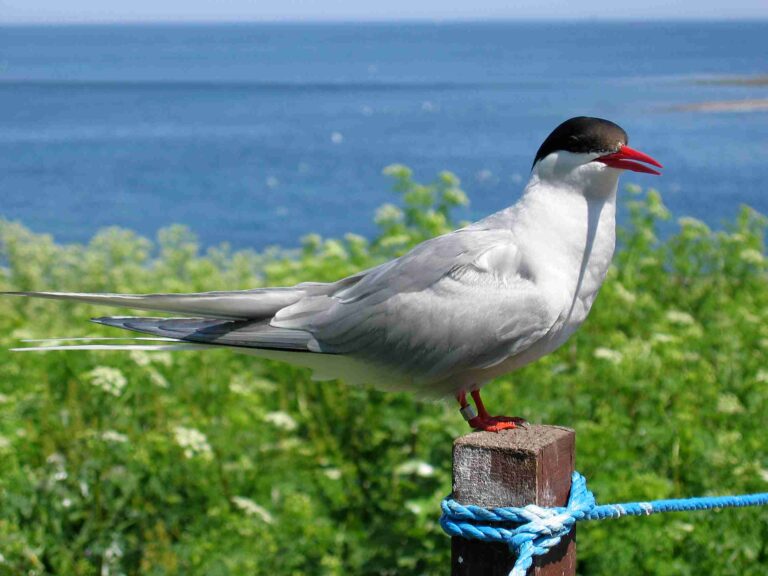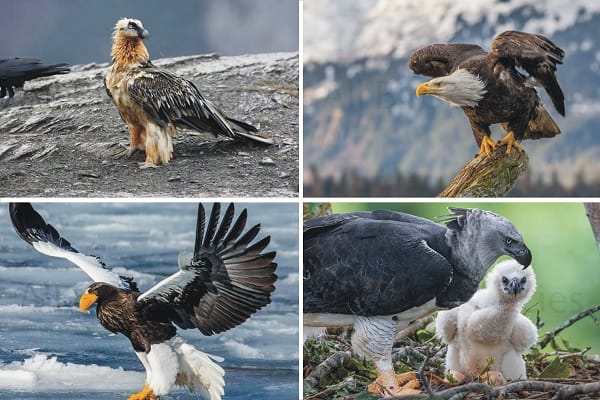Cuckoo bird- Cuculidae Family
Ever wondered why the cuckoo bird draws so much attention with its mysterious ways and loud calls? These birds, part of the Cuculidae family, are more than their famous call. With about 150 species worldwide, mostly in the tropics, let’s dive into their special traits and how they fit into the bird world. We’ll look at their migration, nesting habits, and more, sparking questions about bird behavior.
Introduction to the Cuckoo Family
The cuckoo family, known as Cuculidae, is fascinating with its wide variety and unique traits. These birds are known for their amazing calls and important roles in nature. They mainly eat insects, which helps control their numbers in different places.
One of the most interesting things about cuckoos is how they lay eggs in other birds’ nests. This behavior, called brood parasitism, means they leave their babies with other parents. Scientists find this behavior very interesting, which has led to new insights into their evolution.
This behavior shows how adaptable and clever cuckoos are. It also shows their important role in nature. By learning about cuckoos, we can better understand their place in the world.
As we learn more about the cuckoo family, we’ll uncover the secrets behind their survival. Their behaviors and adaptations are key to their success in different environments.
Classification of Cuckoo Birds
The Cuculidae family includes a wide range of birds that fascinate us with their unique traits and behaviors. This family features the common cuckoo, roadrunners, koels, and couas. The Cuculidae overview helps us see where they fit in the order Cuculiformes. It sheds light on cuckoo taxonomy.
Overview of the Cuculidae Family
This family includes birds with big differences in looks and actions. They live on every continent except Antarctica. Cuckoos are found in both temperate and tropical areas, showing how well they adapt to different environments. Their varied evolution shows the richness in cuckoo classification.
Subfamilies within Cuculidae
Within the Cuculidae family, we find six distinct cuckoo subfamilies:
- Cuculinae – Old World cuckoos, mostly parasitic.
- Phaenicophaeinae – This group includes non-parasitic malkohas and couas.
- Centropodinae – Known as coucals, these birds have a unique lifestyle.
- Coccyzinae – This subfamily covers New World cuckoos.
- Crotophaginae – Consisting of anis, these cuckoos show interesting social structures.
- Neomorphinae – Ground cuckoos fall within this less-known group.
Each subfamily has its own behaviors and looks that add to the Cuculinae classification and our understanding of cuckoo taxonomy. The Phaenicophaeinae information gives us a peek into their unique lives. This shows the amazing diversity in this remarkable family.
Cuckoo Bird Characteristics
Cuckoo birds are truly fascinating with their unique traits. They come in many sizes and shapes, each with special features. These traits help us understand their role in nature.

Physical Description and Size
Cuckoos vary greatly in size, from 15 to 63 cm long. They have slender bodies with long tails and special wing shapes. Arboreal cuckoos have narrow wings for flying well while ground-dwelling ones are bigger and stronger.
Their feathers can be dull for hiding or bright to stand out. Some colors help them blend in, while others draw mates or scare off predators.
Distinctive Features of Feet and Flight
Their feet are quite special, with zygodactyl feet. This means two toes point forward and two backward. It helps them hold onto branches and stay steady.
How they fly also depends on where they live. Migrating cuckoos have long, narrow wings for saving energy. Terrestrial cuckoos have shorter wings for better control. These features let them survive and thrive in their environments.
| Feature | Description |
|---|---|
| Cuckoo Size | Ranges from 15 to 63 cm in length |
| Body Type | Slender with long tails and distinct wing shapes |
| Foot Type | Zygodactyl feet for enhanced grasping and stability |
| Flight Style | Long wings for migrating species; shorter wings for terrestrial species |
| Plumage Variation | Cryptic colors for camouflage and vibrant hues for attraction |
Migration Patterns of Cuckoos
Cuckoo migration is a fascinating process influenced by seasonal changes and where they like to live. By studying these patterns, we learn about the special ways these birds adapt to their environments.
Seasonal Migration and Habitat Preferences
Many cuckoo species move to warmer places to avoid cold winters. They follow specific paths to find food and good places to nest. For example, they often travel when plants bloom, which gives them food.
Notable Migratory Species
The common cuckoo and the yellow-billed cuckoo are notable for their long journeys. The long-tailed koel goes from New Zealand to Polynesia and the lesser cuckoo from Africa to India. These journeys show their amazing navigation skills and how they’ve adapted to their environments.
Impacts of Migration on Breeding Habits
Migration greatly affects how cuckoos breed. Many species time their breeding with when they find the best hosts for laying eggs. In the off-season, cuckoos get ready for spring by planning their breeding. This shows how migration and breeding are closely linked in cuckoos.
Cuckoo Bird Behavior
Cuckoo birds have fascinating ways of surviving and reproducing. They are insect-eaters with unique eating habits. Their diet and breeding ways play a big part in their role in nature.
Feeding Habits and Diet
Cuckoos eat a wide variety of insects, caterpillars, and small animals. They even eat hairy caterpillars that many birds won’t touch. This helps them control pests in farms and gardens.
- Insects
- Insect larvae
- Fruits
- Seeds
Brood Parasitism: A Unique Reproductive Strategy
Cuckoos are known for a special way of making babies called brood parasitism. They lay their eggs in other birds’ nests. These eggs look just like the host’s eggs, making it hard to spot them.
They might even take out an egg from the nest first. This helps their baby birds have a better chance of survive. It shows how cuckoos have evolved a clever way to reproduce.
| Feeding Behavior | Examples |
|---|---|
| Insects Consumed | Various species of caterpillars, aphids, and beetles |
| Fruits and Seeds | Blackberries, wild cherries, and seeds from herbs |
| Brood Parasitism | Common Cuckoo and its host species, such as warblers |
Cuckoos are fascinating because of their varied diet and unique way of making babies. They keep bird lovers and scientists interested in their behavior and role in nature.
Distribution and Habitat of Cuckoos
Cuckoos are found all over the world, except Antarctica. They live in many different places, from lush rainforests to dry grasslands. This shows how well they can adapt to various environments.
Global Range and Habitat Types
Cuckoos live in forests, woodlands, and savannas. They have found ways to live in many ecosystems. This shows how they can adapt to different climates and environments.
Preferable Environments and Ecosystems
Cuckoos like places with lots of food and good spots for nesting. Some of their favorite places include:
- Forests and woodlands
- Tropical rainforests
- Open savannas
- Mangrove forests
- Urban areas
They can even be found in deserts, showing how flexible they are. Living in different places helps make cuckoo ecosystems diverse and supports a lot of other life.
| Habitat Type | Description | Example Species |
|---|---|---|
| Forests | Dense environments with a variety of trees and shrubs. | Common Cuckoo |
| Tropical Rainforests | High biodiversity with ample food sources. | Asian Koel |
| Savannas | Open grasslands with scattered trees. | Greater Roadrunner |
| Mangrove Forests | Coastal areas with salt-tolerant trees. | Black Cuckoo |
| Urban Areas | Regions modified by human activity. | Yellow-billed Cuckoo |
Cuckoo Bird Species Examples
The Cuculidae family is home to many fascinating species. Each one has its own special traits and behaviors. These traits add to the rich variety of bird life.
Common or European Cuckoo
The common cuckoo, or Cuculus canorus, is a key bird in the cuckoo family. It’s known for its loud call in European woods. This bird is famous for laying eggs in other birds’ nests, a behavior called brood parasitism.
This lets it live in different places in Europe and Asia.
Roadrunners and Their Habitats
Geococcyx californianus, a type of roadrunner, is quite interesting. These birds live in dry areas of the southwestern US and Mexico. They have adapted well to their harsh environments.
Their homes are in deserts and scrublands. Roadrunners are fast runners, using their speed to catch prey. They move quickly, showing off their unique traits.
Notable Couas and Malkohas
Couas and malkohas are special birds in the cuckoo family that don’t lay eggs in other birds’ nests. They live mainly in Madagascar and southern Asia. These birds have bright colors and behaviors perfect for living on the ground.
Malkohas are known for their vibrant colors and sounds. They add to the beauty of their ecosystems. Madagascan cuckoos show how these birds play important roles in their environments.
| Species | Scientific Name | Habitat | Notable Traits |
|---|---|---|---|
| Common Cuckoo | Cuculus canorus | Woodlands across Europe and Asia | Brood parasitism, spring caller |
| Greater Roadrunner | Geococcyx californianus | Arid deserts in the southwestern US and Mexico | Fast runner, ground-dwelling |
| Couas | Various species | Madagascar and southern Asia | Brightly colored, terrestrial |
| Malkohas | Various species | Madagascar and southern Asia | Rich colors, unique behaviors |
Cuckoos in Human Culture
Cuckoos have been important in human culture for a long time. They show deep meanings in many ways. Through stories and myths, we see how nature and humans are connected.
The cuckoo symbolizes themes like renewal, deception, and love. It shows us the power of nature in our lives.
Symbolism in Literature and Mythology
In Greek mythology, the cuckoo is linked to the goddess Hera. It stands for loyalty and marriage. Folk tales also use the cuckoo to signal spring and new starts.
This cuckoo symbolism connects with the changing seasons. It inspires stories of rebirth. These tales show how a bird can shape our feelings and social views.
Cultural Associations Across Different Societies
Worldwide, cuckoos have different meanings. In Europe, they often mean betrayal, hinting at stories of cheating. But in India, they bring up feelings of longing and yearning in poetry and music.
These manifestations in art show how cuckoos touch our hearts. They highlight the lasting impact of cuckoos on us all.
Conservation Status of Cuckoo Species
Cuckoo bird species face big challenges to survive, mainly due to threats to cuckoos. It’s key to understand these threats for effective conservation. Habitat loss is a big issue, caused by deforestation, climate change, and farming. These changes harm their homes, food, and migration paths.
Threats Facing Cuckoo Birds
Key threats to cuckoos include:
- Habitat loss from cities and farms.
- Climate change affects their migration and breeding.
- More predators due to changed environments.
- Less food because of pesticides and damage to nature.
Conservation Efforts and Strategies
Many cuckoo conservation initiatives are underway. They focus on habitat preservation and making people aware. We can help by:
- Supporting protective measures for sustainable living.
- Restoring important habitats for breeding and eating.
- Teaching communities why cuckoos matter.
- Working together on research to learn more about them.
Working together, we can lessen the threats to cuckoos. This way, we can help these amazing birds survive and flourish.
| Threats to Cuckoos | Conservation Initiatives |
|---|---|
| Habitat Loss | Habitat Preservation Programs |
| Climate Change | Research and Monitoring Projects |
| Increased Predation | Public Education Campaigns |
| Food Source Depletion | Sustainable Agricultural Practices |
Wrapping Up…
We’ve looked into cuckoo birds and found out how important they are to our bird world. Their unique ways of surviving, like brood parasitism, show how different species cope. From the Common Cuckoo’s sweet sounds to the Greater Roadrunner’s quick moves, these birds add to the beauty of nature.







